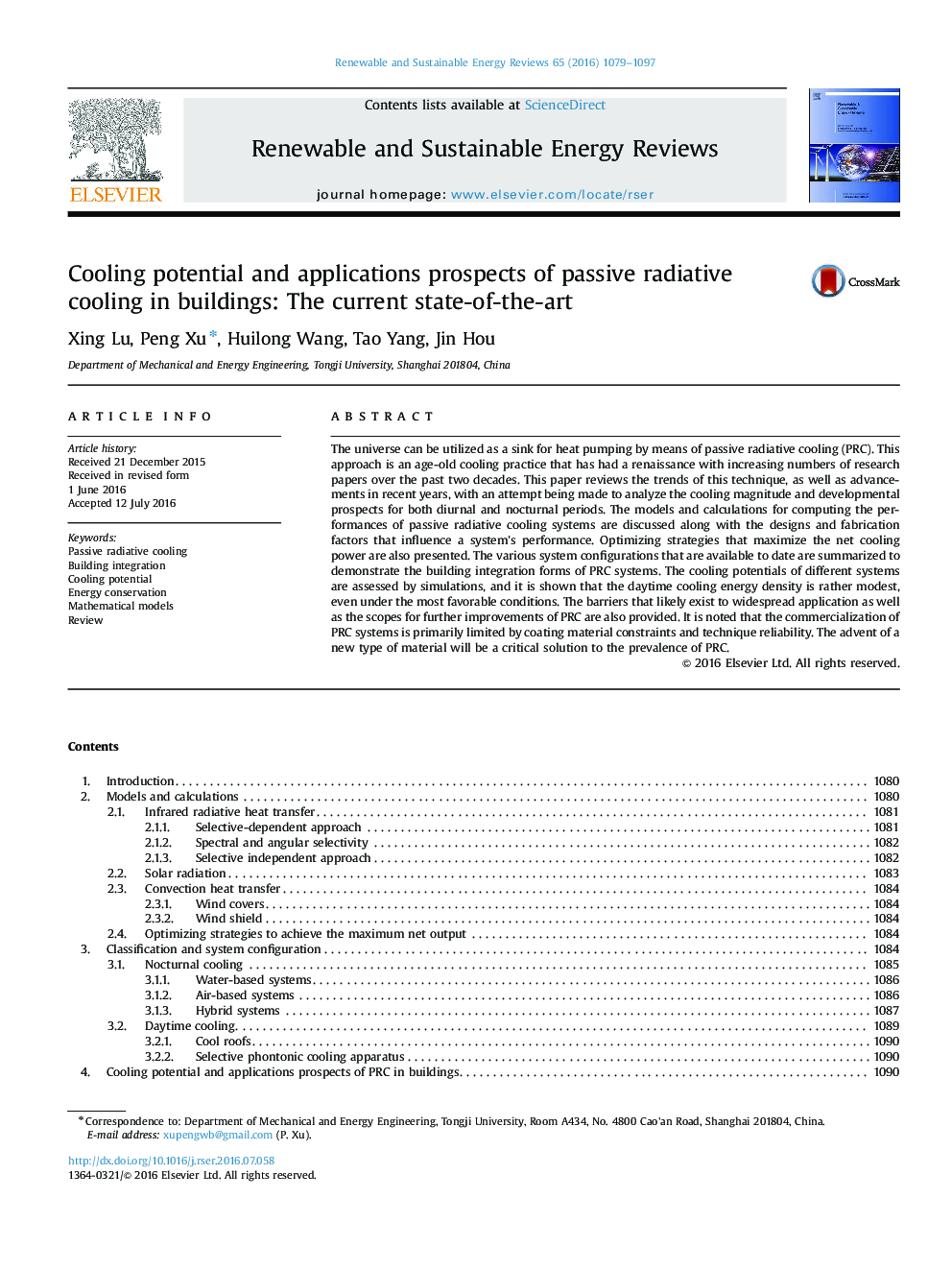| Article ID | Journal | Published Year | Pages | File Type |
|---|---|---|---|---|
| 8113199 | Renewable and Sustainable Energy Reviews | 2016 | 19 Pages |
Abstract
The universe can be utilized as a sink for heat pumping by means of passive radiative cooling (PRC). This approach is an age-old cooling practice that has had a renaissance with increasing numbers of research papers over the past two decades. This paper reviews the trends of this technique, as well as advancements in recent years, with an attempt being made to analyze the cooling magnitude and developmental prospects for both diurnal and nocturnal periods. The models and calculations for computing the performances of passive radiative cooling systems are discussed along with the designs and fabrication factors that influence a system's performance. Optimizing strategies that maximize the net cooling power are also presented. The various system configurations that are available to date are summarized to demonstrate the building integration forms of PRC systems. The cooling potentials of different systems are assessed by simulations, and it is shown that the daytime cooling energy density is rather modest, even under the most favorable conditions. The barriers that likely exist to widespread application as well as the scopes for further improvements of PRC are also provided. It is noted that the commercialization of PRC systems is primarily limited by coating material constraints and technique reliability. The advent of a new type of material will be a critical solution to the prevalence of PRC.
Keywords
Related Topics
Physical Sciences and Engineering
Energy
Renewable Energy, Sustainability and the Environment
Authors
Xing Lu, Peng Xu, Huilong Wang, Tao Yang, Jin Hou,
